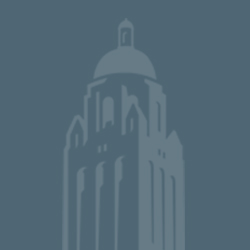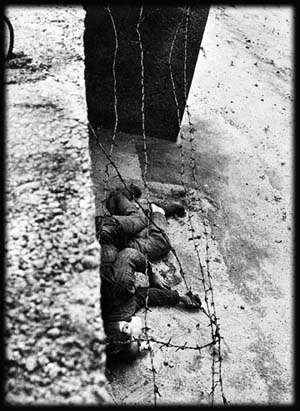|
Dennis L. Bark A Death in Berlin
Suddenly we heard gunshots and saw people running. A Vopo pointed his machine gun at us and told us to stop. My brother and I didn’t know why, of course. But an eighteen-year-old boy, Peter Fechter, had just been shot and was bleeding to death at the wall, one hundred meters from where we were standing, because he wanted to go from one part of Berlin to another, from dictatorship to democracy. The Vopo kept us standing there for thirty minutes—I learned later that, during this half hour, the East Germans were permitting Peter Fechter to bleed to death—then he told us to cross the border. When I put my foot over that white line, I had a feeling in my stomach that I still remember. I was free again, and, for the first time in my life, I began to think about why people fought wars and revolutions and defended peace to protect liberty. I thought that Peter Fechter knew how precious freedom was, which is why he risked his life to get it. |

-
About Hoover
About Hoover
Located on the campus of Stanford University and in Washington, DC, the Hoover Institution is the nation’s preeminent research center dedicated to generating policy ideas that promote economic prosperity, national security, and democratic governance.
Learn More -
Fellows
Fellows
Hoover scholars form the Institution’s core and create breakthrough ideas aligned with our mission and ideals. What sets Hoover apart from all other policy organizations is its status as a center of scholarly excellence, its locus as a forum of scholarly discussion of public policy, and its ability to bring the conclusions of this scholarship to a public audience.
View All Fellows -
Research
Research
Throughout our over one-hundred-year history, our work has directly led to policies that have produced greater freedom, democracy, and opportunity in the United States and the world.
Learn More -
Commentary
Commentary
Hoover scholars offer analysis of current policy challenges and provide solutions on how America can advance freedom, peace, and prosperity.
Learn More - Library & Archives
-
Support Hoover
Support Hoover
Learn more about joining the community of supporters and scholars working together to advance Hoover’s mission and values.
Learn More - Events
- Student Opportunities
-
MyHoover

-
MyHoover
What is MyHoover?
MyHoover delivers a personalized experience at Hoover.org. In a few easy steps, create an account and receive the most recent analysis from Hoover fellows tailored to your specific policy interests.
Watch this video for an overview of MyHoover.
Create AccountForgot Password
Login?
-
MyHoover

-
MyHoover
What is MyHoover?
MyHoover delivers a personalized experience at Hoover.org. In a few easy steps, create an account and receive the most recent analysis from Hoover fellows tailored to your specific policy interests.
Watch this video for an overview of MyHoover.
Create AccountHave questions? Contact us
Forgot Password
Login?
-
Support Hoover
Support Hoover
Learn more about joining the community of supporters and scholars working together to advance Hoover’s mission and values.
Learn More






 Eighteen-year-old Peter Fechter lies dying in the no-man’s-land between the two sides of the Berlin Wall, August 1962. ©Bettmann/CORBIS
Eighteen-year-old Peter Fechter lies dying in the no-man’s-land between the two sides of the Berlin Wall, August 1962. ©Bettmann/CORBIS